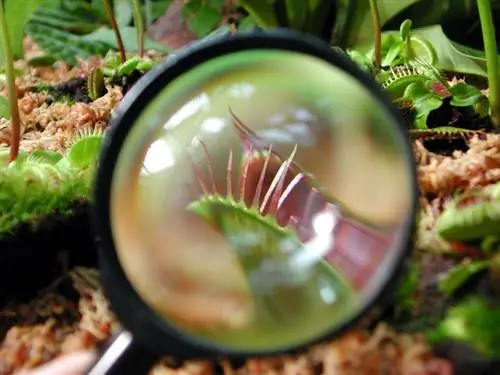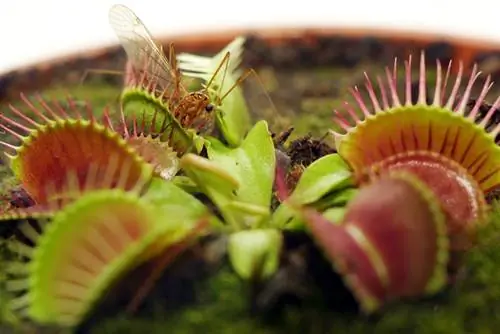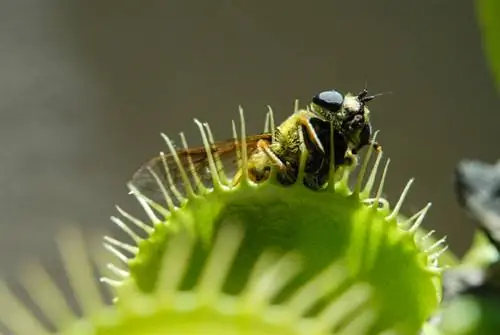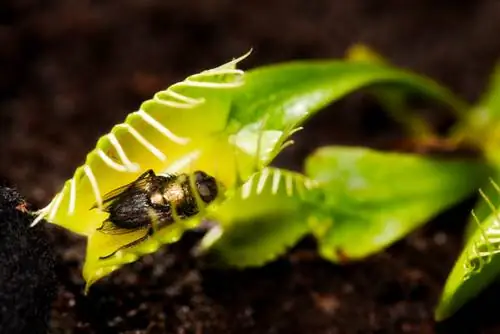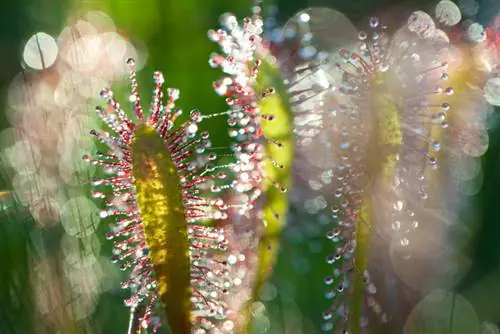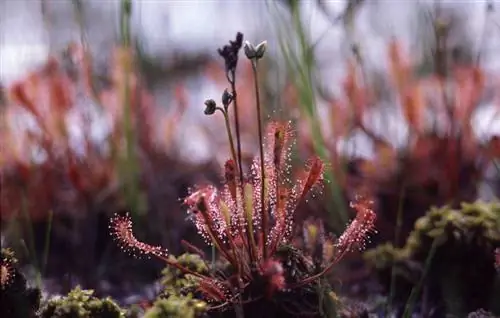- Author admin [email protected].
- Public 2023-12-16 16:46.
- Last modified 2025-01-23 11:20.
Carnivorous plants (carnivores) need high humidity. This cannot necessarily be created in the room. Many hobby gardeners therefore keep sensitive species in a terrarium or in a closed jar. What you need to consider when keeping carnivorous plants in glass jars.
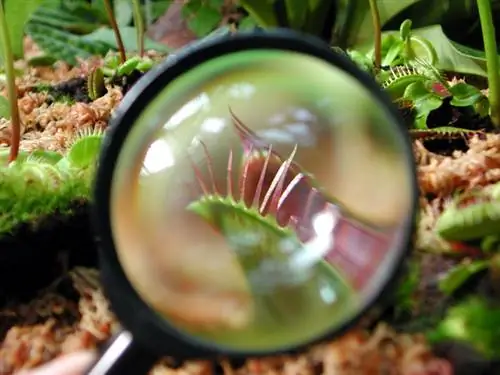
How to care for carnivorous plants in a glass?
To keep carnivorous plants in the glass, place a drainage layer of expanded clay or seramis, use special carnivorous soil, carefully insert the plants and cover the glass. Place it in a bright place, water only with rainwater and change the soil every two years.
It doesn't work without a drainage layer
Almost all types of carnivorous plants occur in nature in very moist locations. Nevertheless, very few can tolerate longer periods of waterlogging. However, in a closed jar there is no drain hole through which excess water could drain.
Therefore, place a sufficiently thick drainage layer on the bottom of the glass. Expanded clay (€11.00 on Amazon) or the commercially available Seramis are well suited.
Fill in the right plant substrate
Use special soil for carnivores as a planting substrate. Never plant carnivorous species in regular garden soil or potting soil from the hardware store.
Most varieties of carnivorous plants do not have very deep roots. That's why the earth layer doesn't have to be too thick.
Carefully place the plants in the substrate so that the roots are covered. Cover the container with a sheet of glass or clear plastic wrap.
Which location is ideal for the glass?
The jar with the carnivorous plants must be placed as brightly as possible. Carnivores also love direct sunlight.
However, the temperatures inside a closed glass or terrarium can rise very high due to the sun. The plants literally burn.
Make sure, especially in midsummer, that excessive heat cannot develop inside the glass.
Care for carnivores in a glass jar
The most important care measure is watering. As soon as the substrate has dried on top, give the plants water. Only use rainwater, as hard water from the tap is harmful to carnivorous plants.
Fertilizing and feeding the carnivores is not necessary, even if it is often advised.
There are enough nutrients in the planting substrate so that the carnivorous plants do not need any additional nutrients. If you would like to feed for demonstration purposes, use only small, live insects and feed only one prey item at a time.
Tip
Carnivores are usually not fast-growing. However, you should replace the soil in the glass at least every two years. This gives the plants new nutrients.

